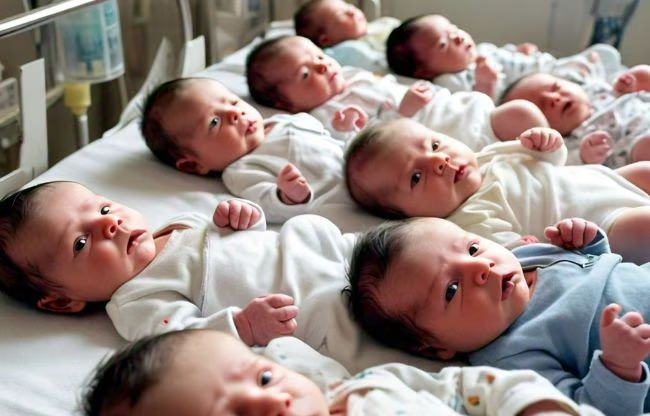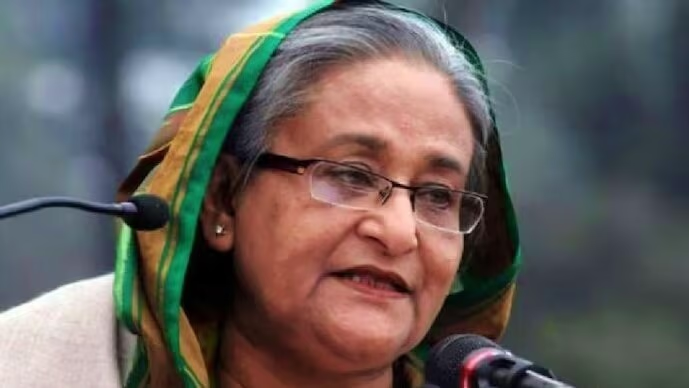A few weeks ago, the Chief Minister of Andhra Pradesh, Chandrababu Naidu, urged people to have more children. He stated that the country's fertility rate is 2.1, while Andhra's is 1.6, and if this continues, by 2047, the elderly population will be significant. He even mentioned that the government would soon introduce a new law, allowing only those with two or more children to contest in local elections.
Following Naidu, Tamil Nadu's CM, M.K. Stalin, echoed similar sentiments, suggesting that new couples should aim for 16 children.
This isn't just limited to India...
The appeal to have more children isn't confined to India. In the 1980s, China introduced the 'One Child Policy' to curtail population growth, but an aging populace prompted a shift to 'Two Child' and eventually 'Three Child' policies.
Last year, to encourage marriage and childbirth, China launched incentives.
Now, globally, countries are devising strategies to boost declining fertility rates and manage an aging population. Russia recently proposed 'Sex at the Workplace', suggesting employees take lunch or coffee breaks for intimacy and childbearing.
Reports indicate Russia is contemplating a 'Ministry of Sex' to address low fertility rates. President Vladimir Putin's close associate, Nina Ostania, is reviewing the proposal for such a ministry.
In Japan, conservative leader Naoki Hayakuta made a controversial proposal: girls should marry by 25 or face enforced uterine removal by 30. This stirred considerable backlash.
Following the uproar, Hayakuta apologized, arguing the proposal aimed to encourage early childbearing, boosting fertility rates.

Source: aajtak
Why the Push to Increase Population?
Five decades ago, Paul Ehrlich's book warned of a 'Population Explosion', predicting overpopulation would lead to starvation, turning Earth into a 'planet of dead'. The book stirred global concern.
Yet, it's quite the opposite now. Two years ago, Elon Musk claimed the biggest future challenge would be declining birth rates, not global warming, advising more children.
Experts believe falling fertility rates have governments worldwide anxious. Aging populations and lower fertility rates have led governments to invest significantly.
This July, a UN report projected population trends to 2100. The report revealed that women are having fewer children than in 1990. By 2080, the human population is expected to surpass 10 billion before declining.
Science journal Lancet, in a study by Washington University, analyzing fertility rates from 1950 to 2021 across 204 countries, predicted that by 2100, 97% of countries would have below-average fertility rates.
Fertility rate indicates how many children a woman is likely to have in her lifetime. In the 1960s, the global average was over 5; now, it's 2.3 according to the World Bank.

Source: aajtak
What About India?
India faces similar challenges with declining fertility rates and an aging population. Last year's United Nations 'India Aging Report 2023' predicted that by 2050, 20.8% of India's population would be elderly. The elderly population has been rising since 2010, leading to a smaller portion of the population under 15.
In July 2022, India's elderly population was 149 million, 10.5% of the total. By 2050, this could rise to 347 million, 20.8% of the population. By 2100, over 36% of India's population could be elderly.
Between 2022 and 2050, India's overall population is projected to grow 18%, while the elderly population could rise by 134%, and those over 80 by 279%.
Like many other nations, India's fertility rate is decreasing. A NITI Aayog report shows in the 1950s, Indian women had an average of 6 children. By 2000, that was down to 3.4. The NFHS-5 survey revealed a current rate of 2, with an estimated decline to 1.7 by 2050.

Source: aajtak
How Concerning is This?
The Guardian reported Taiwan's fertility rate at 0.85, leading to school closures. Japan's 1.21 rate affects diaper sales. Greece's 1.26 means villages without children and long workweeks. South Korea's record-low 0.72 could halve its population by 2100.
There are numerous reasons for declining fertility. Modern women enjoy more freedom, many couples prefer fewer children, focusing on career over family planning, and contraceptive use has increased.
Governments are employing varied tactics to increase fertility rates. China's 'One Child Policy' shifted to 'Three Child Policy', offering incentives and bonuses. Japan provides subsidies, daycare, and employment security. South Korea has spent over 200 billion dollars assisting childbearing families, but these measures prove ineffective as fertility rates continue to drop.
The Lancet study forecasts only six countries to maintain a fertility rate of 2.1 or more: Samoa, Somalia, Tonga, Niger, Chad, and Tajikistan, predominantly in Africa, where fertility remains highest.
By 2021, one in four children were born in Africa. By 2100, predictions suggest one in two births will occur in Africa.
Amid efforts to boost the population, there's consideration of a 'Population Exchange', settling underpopulated nations with migrants to promote childbearing.




